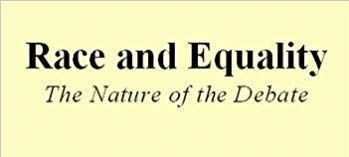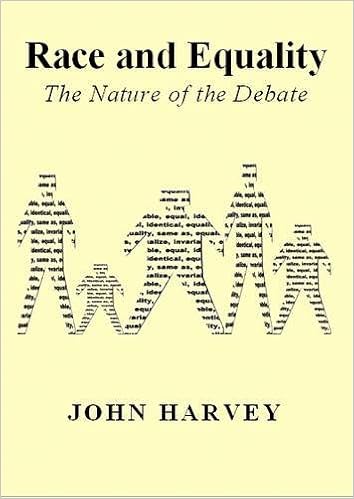
By Richard Lynn
04/04/2012
[Peter Brimelow writes: As an intellectual episode, the repression of race realism over the last sixty or seventy years can only be compared to Copernicus and Galileo. But Copernicus and Galileo did not have the internet or the modern publishing technology that has allowed Professor Richard Lynn, now 81, to establish the Ulster Institute and ensure that this debate continues. We post tonight Lynn’s thoughts on the Ulster Institute’s latest publication: Race and Equality, by John Harvey].
[Previously by Richard Lynn: Race Differences, Immigration, And The Twilight of the European Peoples]
Throughout the social sciences, the early and middle decades of the twentieth century saw the repudiation of genetics as the determinant of individual and race differences in intelligence and achievement, and its replacement by “culture”. In anthropology, Franz Boas argued in his influential book The Mind of Primitive Man (1911) that there was no such thing as a superior culture. In psychology, John B. Watson asserted
“Give me a dozen healthy infants, well-formed, and my own specified world to bring them up in and I'll guarantee to take any one at random and train him to become any type of specialist I might select — doctor, lawyer, artist, merchant-chief and, yes, even beggar-man and thief, regardless of his talents, penchants, tendencies, abilities, vocations, and race of his ancestors”.
This position became known as “the standard social science model”.

There were a few dissenters. Henry Garrett, head of psychology at Columbia and one-time president of the American Psychological Association, called it “the equalitarian dogma”. And Arthur Jensen, one of the leading researchers in the field of intelligence, argued that the black-white differences in intelligence in the United States do probably have some genetic basis. [PDF]
But the “standard social science model” has remained dominant. It even received a kind of official endorsement by the United Nations in its 1978 Declaration on Race:
“The differences between the achievements of the different peoples are entirely attributable to geographical, historical, political, economic, social and cultural factors”.
In 1997, it was reasserted by Anthony Giddens, a leading British sociologist, who wrote that “there is no decisive evidence that any traits of personality are inherited” and “that some races are on average cleverer than others remains unproven and improbable”.
Now John Harvey has written a compelling refutation of “the blank slate” theory (as the standard social science model was designated by Steven Pinker): that everyone is born with equal potential to develop all abilities.
It’s called Race and Equality, published by the Ulster Institute for Social Research, [$24 soft cover, 142 pp]. Also available as a PDF here.
Harvey begins by discussing the psychology of those who argue for the genetic equality of all peoples. He suggests there are four principal types:
The body of Harvey’s book is devoted to arguing that, during the last half century, there has been mounting evidence that the “blank slate” theory is wrong for both individuals and for races. He reviews evidence for the heritability of intelligence and concludes that it lies between 50-75 percent. He notes the possibly counter-intuitive conclusion that the heritability percent is lower in children and increases during adolescence to reach its maximum in adults. The reason: children are more influenced by their environment and that these effects fade out as individuals become older and reach their natural level. Harvey also reviews evidence that personality and temperament have a significant heritability, which he puts at approximately 50 percent.
Harvey turns next to group differences. First, he considers the differences between men and women. He notes that men have a greater range of intelligence than women, so that there are more men with very high IQs and with very low IQs. He suggests this goes some way to explaining why there are fewer women than men at the top of most businesses and professions.
In Chapter Three, Harvey begins his discussion of group differences in animal species — known as breeds, strains or varieties. He gives a number of examples of how these group differences have evolved in response to different environments, or have been bred for by humans. One of the most remarkable examples is the dog. It was originally bred from wolves. Now there are about 200 different breeds, each with its own distinctive temperament and ability.
In Chapter Four, Harvey discusses how the human races evolved first in Africa and then spread from Africa into Europe and Asia around 70,000 years ago. He describes how the colder northern environments of Eurasia selected for a number of characteristics, such as the shorter limbs of the Northeast Asians, which conserved heat better. These environments also selected for some psychological characteristics, including forward planning. Food was seasonal and frequently scarce, so the ability to plan ahead and store food for future consumption was critical.
In Chapter Five, Harvey describes racial differences in a number of physiological characteristics. These include the greater susceptibility of black Africans to sickle cell anaemia and of Northern Europeans to multiple sclerosis.
Another is lactose tolerance — the ability to digest milk. It evolved in Central and Northern Europeans, because these peoples tamed and herded cattle, sheep and goats from which they obtained milk. Thus for instance in Sicily, with its large North African element, only 30 percent of the population are lactose tolerant. But this percentage increases in more northerly latitudes, reaching 98 percent in Scandinavia. Similarly, in the United States, only 20 percent of blacks are lactose tolerant, compared with 47 percent of Mexican Americans and 85 percent of Europeans.
Harvey notes further that several studies involving DNA analysis have shown that people can be classified genetically into “clusters” as the population geneticists Cavalli-Sforza, Menozzi & Piazza like to call them, and that these “clusters” are precisely the same as the races of classical anthropology.
Harvey considers the claim that there are no genetic changes between the races for many tens of thousands of years. But he concludes that, on the contrary, there is considerable evidence that races’ differences have been evolving even as recently as the last 10,000 years or so. For example, he cites evidence that the Tibetans diverged genetically from the Han Chinese approximately 3,000 years ago and have evolved genes enabling them to adapt to the low oxygen levels at high altitudes.
It is not until Chapter Six that Harvey tackles the question of race differences in psychological characteristics. He gives a number of examples. For instance, studies of national differences in creativity, trust and honesty have found that Europeans and Northeast Asians generally score the highest. He cites evidence that Australian Aborigines have a visual cortex about 25 per cent larger than that of Europeans, explaining their strong visual memories. Coming finally to race differences in intelligence, he summarises my own 2006 conclusion that these range from average IQs of 110 (Ashkenazi Jews) to 105 (Northeast Asians), 100 (Europeans), 85 (Latin Americans, South Asians, North Africans), 70 (sub-Saharan Africans) and 60 (Bushman of the Kalahari Desert).
Harvey also summarizes my own and Tatu Vanhanen’s work on national differences in intelligence, showing that these explain a significant amount of the variation between nations in economic development, infant mortality and a number of other variables.
Harvey notes that during the last half century there has been large scale immigration of non-European peoples into North America and Western Europe. He believes this is likely to continue. Europeans have below replacement fertility while non-Europeans have higher fertility. He predicts that non-Europeans will become majorities of the population throughout North America and Western Europe and “there will be no countries left of mainly European stock by the end of this century”.
Harvey concludes that “the standard social science model” or “blank slate” theory is contrary to a fundamental principle of evolutionary biology: populations that have inhabited different environments over many thousands of years inevitably evolve genetic differences. The assertion of that all peoples are biologically identical in respect of their psychological characteristics is a denial of Darwinian selection.
And, citing Robert Putnam’s finding that there is less trust between peoples in multiracial societies, [PDF] Harvey suggests that as North America and Western Europe become increasingly multiracial, there will inevitably be a deterioration of trust and social cohesion.
Richard Lynn [Email him] is Professor Emeritus, University of Ulster, and the author of several books on IQ, including The Global Bell Curve, IQ and Global Inequality, and The Chosen People: A Study of Jewish Intelligence and Achievement, reviewed by Steve Sailer here.
This is a content archive of VDARE.com, which Letitia James forced off of the Internet using lawfare.